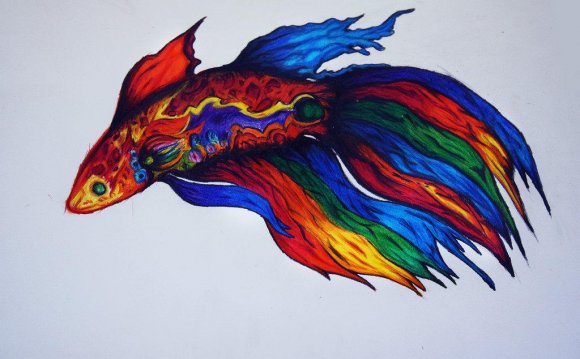
Breeding aquarium fish is one of the steps to becoming a skilled aquariast. Once fish are kept healthy enough to spawn, the novice knows that they can attempt to keep more challenging fish. In order to breed a species, the aquariast usually needs to be able to distinguish between the sexes and to be able to recreate natural conditions to stimulate spawning. Always record your successes and failings in a notebook.
Sexing FishDetermining the sex of a fish is an important step in knowing whether one has a pair. Most fish can be classified as sexually dimorphic or sexually isomorphic. In sexually dimorphic species, the sexes can be easily distinguished by primary (shape of sex organs) and secondary differences (size, shape, color [sexual dichromatism], finnage). Males are frequently more colorful, larger, and have more elaborate finnage. Among the more brilliant outstanding of sexual dimorphism can be found in Lake Malawi cichlids, Killifish, and Livebearers. In sexually isomorphic species, there are minute, if any, apparent sexual differences. Often, the only way to distinguish between the sexes is the shape of the genital papilla, which is only visible around spawning times. In some isomorphic species, the males are slightly larger and the females are slightly rounder in the belly. Some sexually isomorphic species have no known external sexual differences.
Selecting the Parent FishOnce males and females have been distinguished, a suitable pair or spawning group should be chosen. There are several important traits to seek in choosing the parent fish.
- Choose fish that display good markings and color, that should produce attractive young.
- Only use mature, healthy fish for spawning because unhealthy fish, if they will spawn, may produce unhealthy or deformed young.
- Be sure that the pair is compatible. Many species cannot be put together in a breeding tank and expected to get along and produce young. In fact with many cichlids, pairs form only after a group has been raised together for months if not years. In certain species, one partner will bully the other to death if there is not compatibility.
- Avoid crossing different strains or color forms because the young are often unattractive.
- Make sure that the pair are both of the same species because hybrids are sterile. With some cichlids and Killifish, females of different species look similar.
The majority of aquarium fish are egg-layers with external fertilization. Egg-layers can be divided into five groups: egg-scatterers, egg-depositors, egg-burriers, mouth-brooders, and nest-builders.









